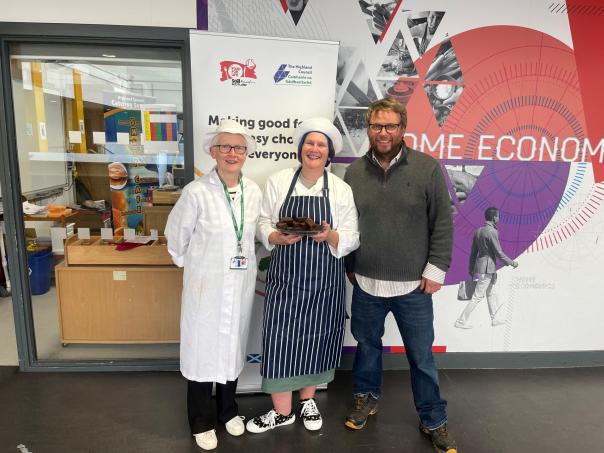Highland Council joins pilot to put more organic peas on school plates

It is a partnership between Soil Association Scotland, The Highland Council and other councils in the northeast of Scotland, pea producer Phil Swire of Balmakewan Farm, the Royal Highland Education Trust (RHET) and the Royal Northern Countryside Initiative (RNCI).
The Give Peas a Chance! pilot project aims to open up a new route to market for this local and organic plant protein whilst also allowing pupils to access healthy and sustainable food. School meals now contain pea-based dishes such as kitchari rice, pea cookies and choc-pea brownies.
The new pea recipes are accompanied by educational activities to show the pupils the farm-to-fork story of the peas. Home economics students at Inverness Royal Academy got the chance to learn more during a Food Festival at the school with pea farmer Phil Swire.
The organic peas are grown in Aberdeenshire. The roots of the pea plants have a symbiotic relationship with rhizobium bacteria, which fixes nitrogen in the soil, making it a climate-friendly protein that also has huge nutritional benefits for Highland’s school pupils.
Inverness-based Swansons Food Wholesalers are delivering the peas to Highland schools. The local business started as a greengrocer with two staff in 1991 and has grown into a wholesale business with 40 staff, delivering produce to private and public caterers across Highland and Moray.
Sarah Gowanlock, partnerships manager at Soil Association Scotland, said: “We’ve seen through the first 12 months of the pilot project that school meals that include this plant protein are a win-win: locally sourced, sustainable and nutritious.
“Our education partners at RHET and RHET Highland help bring to life the farm-to-fork journey of the pea for school pupils, meaning that not only are they trying new foods, but they’re also learning more about where those foods come from.”
